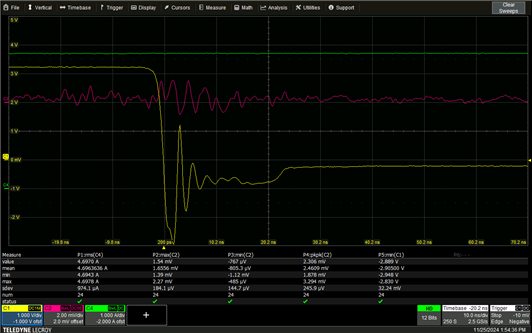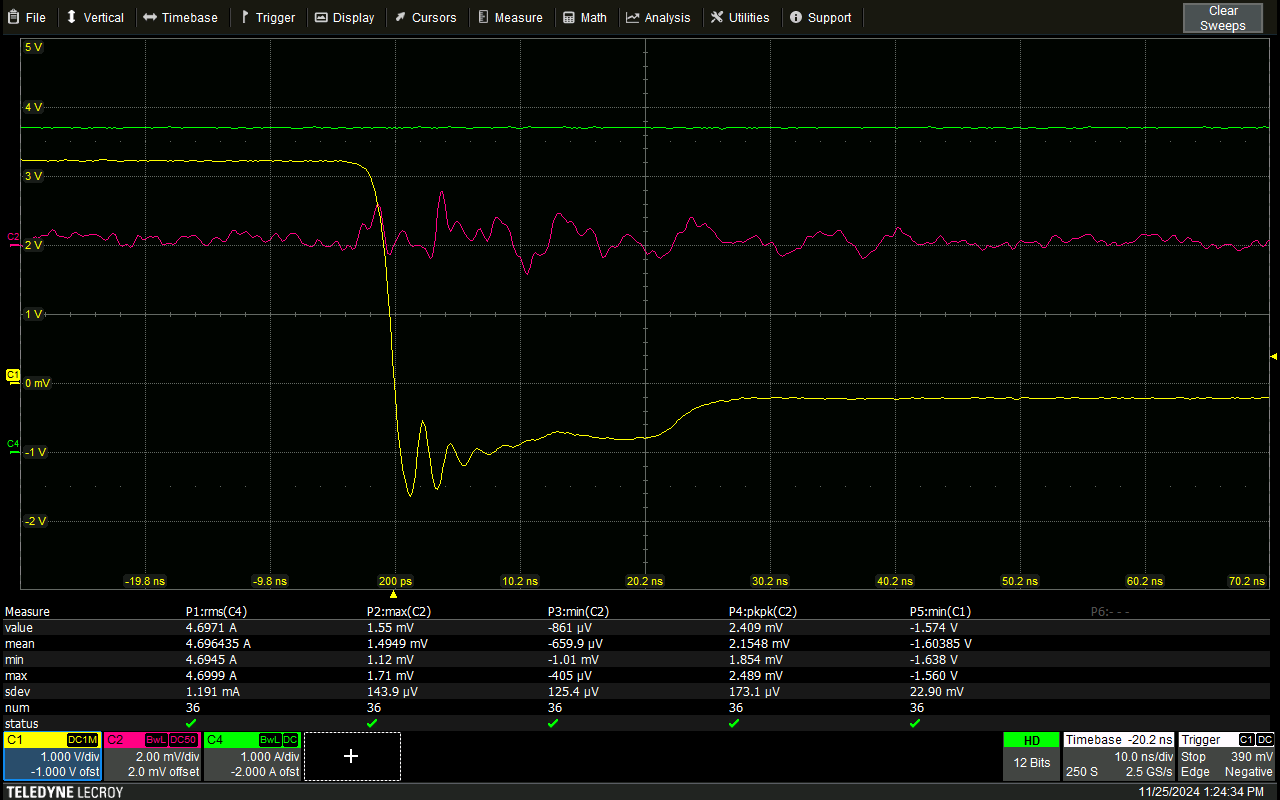Tool/software:
Hello TI support
I've got an issue to meet the specification of the PH pin of the TPS54519, especially the "undershoot" as following:

The max abs rating is -2V during 10ns.
My converter operates from 3.5V to 0.95V 5A and has the following undershoot:
CH4 : total output currrent (250mA is not included in this trace)
CH2 : output voltage (AC coupled)
CH1 : PH pin

(min with stat = -2.95V).
The probing is made with a 1GHz scope, 500MHz passive 1:10 probe with a small pigtail (for the GND connection).
The layout is the same as the EVM.
The only way to achieve the specification with margin is to add:
- A RBOOT of 33Ohm
- a high and low side snubber of 2.2Ohm and 2.2nF

(min with stat = -1.64V).
Could you confirm :
- the undershoot measured (with no snubber) is really an issue regarding the max abs ratings ?
- the way to fix it is correct and sufficient ?
The layout and schematics could be provided by email for more detail.
Thanks for your support

